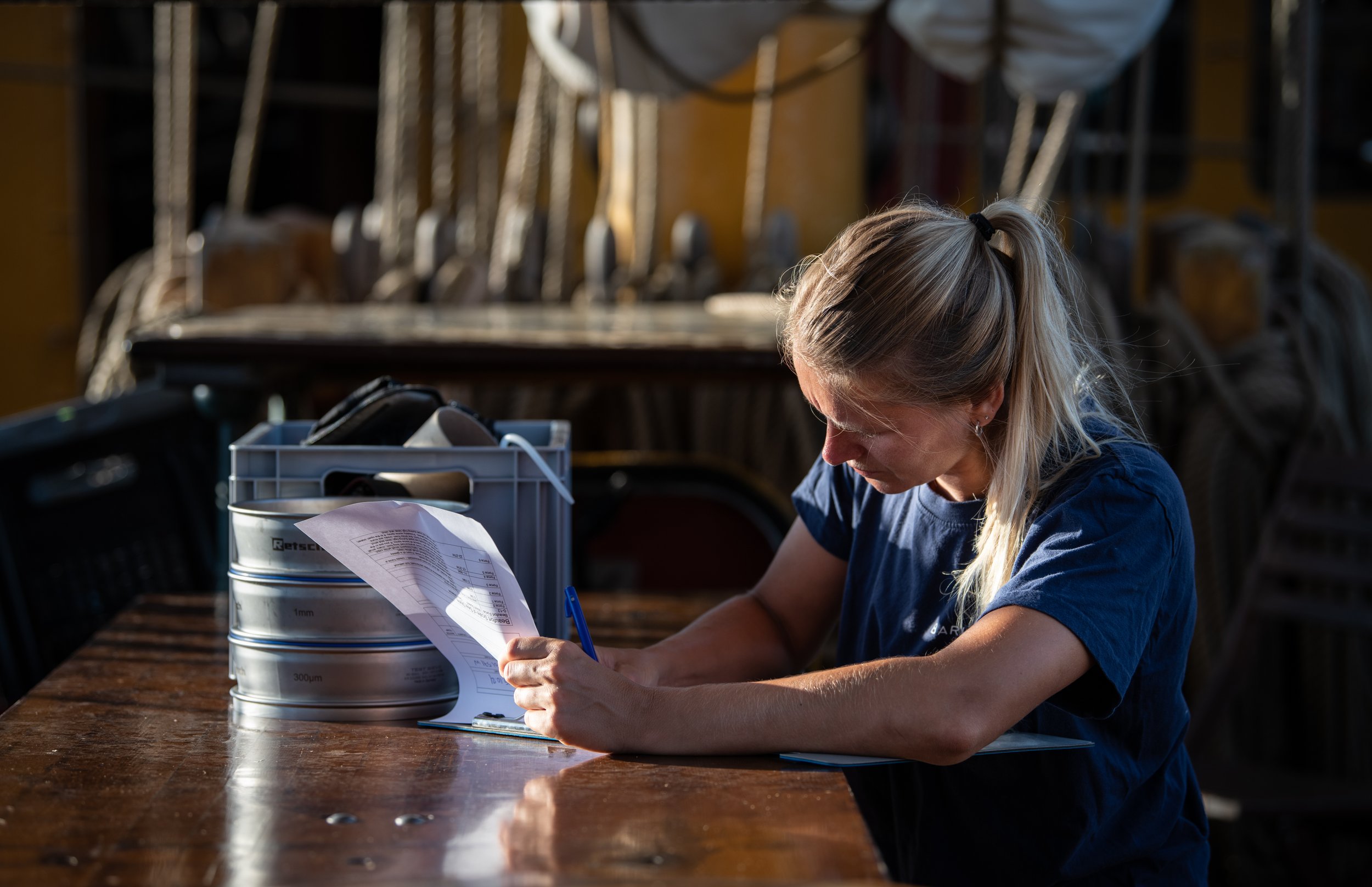Plastic can be categorised into different categories depending on type and components. In this project we use 7 plastic categories: Fragments (bits of hard plastic), film (like bags), foam (like polystyrene), line (like from fishing gear), industrial pellets (also called nurdles), microbeads (from cosmetics), and microfibers (from synthetic clothing– much thinner and kinkier than threads).
Examining microplastics (< 1mm) requires high resolution microscopy. Using a stereo microscope on board, it is possible to investigate microplastics < 1 mm. However, its effectiveness increases tremendously when combined with infrared spectroscopy and chemical treatment. To be able to clearly identify plastic particles below 1 mm a surfactant that helps separate the microplastics from other particles and organic material, and simple oxidation using are used.







